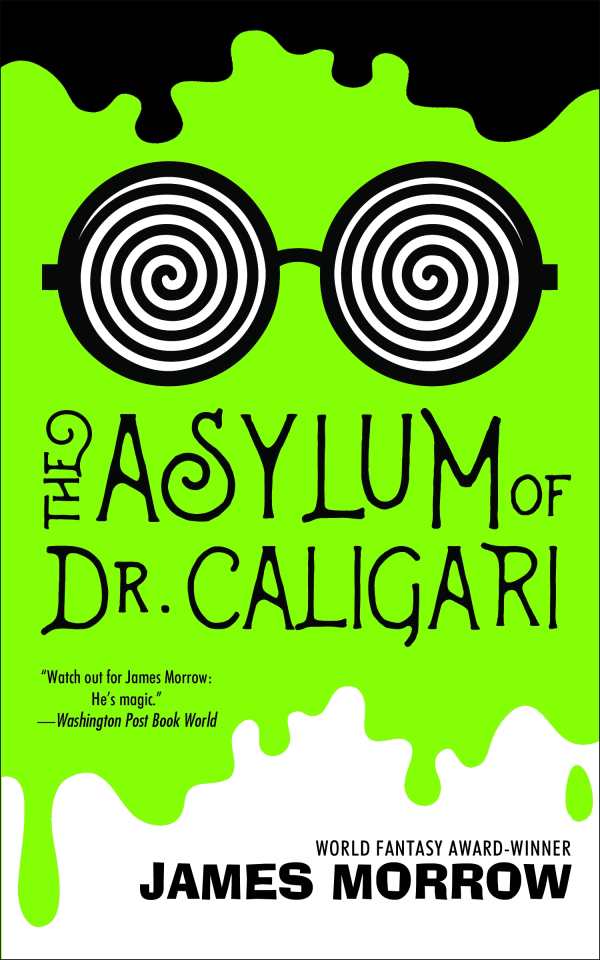The Asylum of Dr. Caligari
Morrow savagely satirizes geopolitics and war-mongering elites in this linguistically playful comic fantasy.
World Fantasy Award winner James Morrow’s latest novel is a savagely witty riff on the classic silent film, The Cabinet of Dr. Caligari. In The Asylum of Dr. Caligari, young art-school graduate Francis Wyndham is rebuffed from the exclusive Parisian art scene by the likes of Picasso, Duchamp, and Braque before painter Andre Derain recommends him for an art-therapy gig at a sanitarium in the neutral state of Weizenstaat.
He shortly enters into a passionate affair with talented arachnophilic inmate Ilona Wessels, a pairing which proves infinitely helpful in thwarting the demented projects of the asylum overlord.
Set during the tumult leading up to and through World War I’s carnage, the book is an over-the-top romp that skewers the glorification of war. Caligari’s thirst for power is aided by an ensorcelled mural that infuses young soldiers with frenzied Kriegslust and that Francis, Ilona, and an eccentric passel of lunatics, pacifists, and otherworldly figures try to destroy.
There are obvious contemporary parallels to Caligari’s megalomaniac charlatan character, who seeks control of the global war machine, and some of the same themes are explored here as in the original Caligari film about the blurred line between sanity and insanity and the perils of totalitarian rule.
Morrow loves to play with language—several languages, really. The novel displays a gorgeously expansive vocabulary, double entendres, and a running joke involving the constant correction of Ilona’s meaningful malapropisms.
The writing is often witty and light, but there are also lines of great pithiness and seriousness, as in a description of trench warfare:
Although neither side had won the Battle of the Frontiers, neither side had lost it either, except for the thousands of young men who’d been folded into the campaign’s alleged necessities and inexorable arithmetic.
This is an erudite, fun book that can be enjoyed on many levels; it succeeds as a satire of geopolitics and warmongering elites, as a comic fantasy, and as a pastiche of the 1920 film that appears on so many fans’ “best of” lists. If one has a good knowledge of European languages, twentieth-century history, and a mental image bank of Western art history, the experience will be so much the richer.
Reviewed by
Rachel Jagareski
Disclosure: This article is not an endorsement, but a review. The publisher of this book provided free copies of the book to have their book reviewed by a professional reviewer. No fee was paid by the publisher for this review. Foreword Reviews only recommends books that we love. Foreword Magazine, Inc. is disclosing this in accordance with the Federal Trade Commission’s 16 CFR, Part 255.

